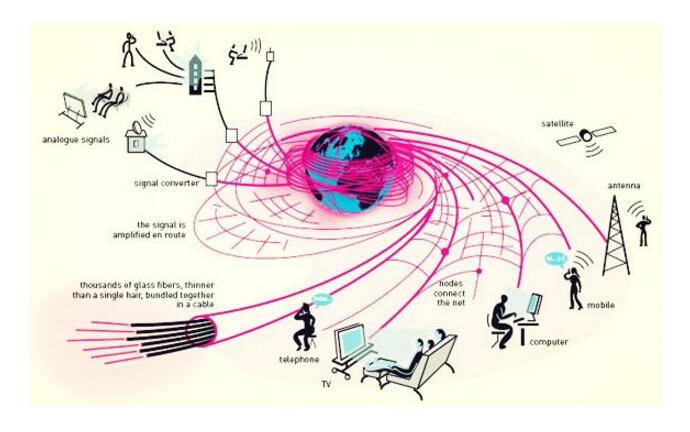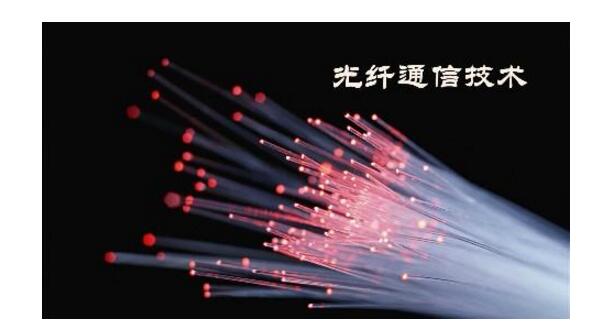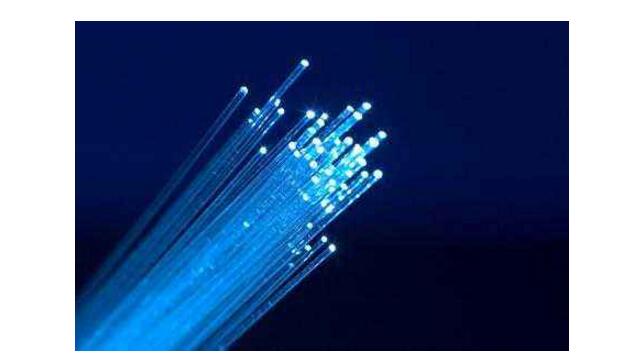The optical fiber communication system is composed of a large number of optical fibers. The main material is glass, which is an electrical insulator. It does not need to consider the ground loop problem. Since the development of optical fiber communication technology, this technology has developed rapidly with good performance. Especially in the era of information explosion, the application of optical fiber communication technology has made great contributions to the development of the communication industry and the transformation of the whole society.
1.2 Characteristics of optical fiber communication 1.2.1 Communication wide frequency band, high capacityIn a single-band optical fiber communication system, the optical fiber is usually affected by the terminal equipment, and the wide-band feature cannot be fully expressed. However, this defect can be perfectly solved by the optical fiber communication transmission technology. The broadband and high-capacity characteristics of optical fiber communication are of great significance for the transmission of information, and can meet the development needs of future broadband integrated services.
1.2.2 Low loss, long relay distanceCompared with other transmission media, the practical quartz fiber loss can be less than 0.2dB/km, which is much smaller than other media. Even if non-quartz fiber is used in the future, the damage value is about 10-9dB/km. The low-loss characteristics of fiber optics determine that fiber-optic communication can achieve long-distance relay distance. In actual construction, the cost of the communication system can be greatly reduced, which is beneficial to improve the stability and reliability of the system.
1.2.3 Strong anti-interference performanceThe material used to make the optical fiber has insulating properties and is weakly interfered by lightning and ionosphere. It can also resist the interference caused by industrial electrical equipment such as electrical equipment and high-voltage equipment to a certain extent. It can be used for parallel erection with high-voltage transmission lines, or The power conductor composite composite optical cable is used for communication transmission. The good anti-jamming performance of fiber optics determines its wide application in military, electrical and other fields.
1.2.4 No crosstalk interference, strong confidentialityIn the traditional communication transmission process, the carrier bearer information is easily stolen and leaked, so the information confidential transmission effect of the traditional communication is poor. In the process of optical fiber communication transmission, there is no interference phenomenon, and information is difficult to leak from the optical fiber. The light wave is at the turn, because the bending radius is too small, it is easy to leak, but its strength is also very weak. For this problem, the application of the matting agent can be eliminated, so that the confidentiality of the information can be achieved as well as the problem of shielding crosstalk interference.
1.2.5 Thin wire diameter and small weightThe inner core radius of the fiber is about 0.1mm, which is 1% of the single-tube coaxial cable. The low wire diameter makes the entire transmission system take up less space, and has the advantages of saving underground pipeline resources and reducing floor space. In addition, the fiber is made of glass and the weight is extremely light. The weight of the constructed cable is also small. The weight of the 1m single-tube coaxial cable is 11kg, while the cable with the same capacity is only 90g.

The development of optical fiber communication technology began in the 1950s and 1960s and was in the third industrial revolution. The earliest developed fiber loss rate was 358 decibels per kilometer. A few years later, the British Institute of Communications scientists theoretically speculated that the minimum loss of fiber-optic communication could be reduced to 19 decibels per kilometer; then Japanese researchers successfully developed a fiber with a loss rate of 100 decibels per kilometer, a reduction of 50 compared to the original product. %the above. The United Kingdom then developed a quartz fiber with a loss of less than 20 decibels per kilometer. The newly developed erbium-doped silica fiber has a loss of 0.2 decibels per kilometer, which is close to the theoretical loss limit.
Since the middle of the 20th century, fiber-optic communication technology has been studied for decades. Especially in the past ten years, the technology has achieved great development, emerging technologies are emerging, and communication capabilities in the traditional sense have been greatly improved. The scope of application is more extensive. Optical fiber communication technology has gradually shifted from a single communication industry to a diversified level, playing an important role in all walks of life.
As a major change in the history of information communication, optical fiber communication technology has been given a strong vitality since its birth. After decades of development research, optical fiber communication technology has gone through the development process from proposing theory to technical practice in engineering field to high-speed optical fiber communication. The development of optical fiber communication technology can be roughly divided into five stages: (1) Multimode optical wave with a wavelength of 850 nm; (2) multimode fiber with a band of 1310 nm; (3) 1310 nm single mode fiber; (4) 1550 nm single mode fiber; (5) long-distance transmission fiber communication technology.

Our most common fiber is ordinary fiber. Advances in optical communication technology, system development, single-wavelength information capacity and optical relay distance increase The performance of G652 fiber has been further enhanced, in different regions, a single-mode fiber that meets the cutoff wavelength specified by ITUTG654. There is also a single-mode fiber that complies with the G653 regulations and has been developed and improved.
3.2. Status of core network developmentChina's major trunk lines have fully adopted optical cables, and multi-mode optical fibers have been rationally eliminated, and single-mode optical fibers have been fully implemented. Commonly used are G652 and G655 two kinds of fiber. After the initial use of G653 in China, it will not continue to develop in the future. The G654 has never been used in China's terrestrial cable because it cannot achieve a large increase in the capacity of this type of communication system. Mainline cables are mainly outdoors, and most use discrete fibers. The old structure in these cables has been deactivated.
3.3. Development status of access network cableThe optical cable of the access network has the characteristics of multiple branches, short distance, frequent difference, and the like, and the network capacity is usually increased by increasing the number of optical fibers. Since the inner diameter of the pipeline of the city pipeline is constant, it is important to reduce the weight of the optical cable and reduce the diameter of the optical cable by increasing the number of cores of the optical fiber and increasing the density of the assembly. The access network usually uses G652 single-mode fiber or G652C low-water peak single-mode fiber. The latter has only a small amount of use in China.
3.4. Status of indoor optical cable developmentIndoor fiber optic cables usually need to be able to meet different requirements and have multiple functions. For example, the transmission of data, voice, and video signals may also be applied in remote controls and sensors. In the cable classification of the IEC, the indoor optical cable is pointed out. It must include at least two parts, namely, intra-office cable and integrated wiring. The cable of the integrated wiring is generally placed on the indoor end of the user, and the main purpose is to be used by the user, so it is necessary to fully consider its vulnerability. [5] The office cable is mainly placed in the central office and other types of telecommunications equipment rooms, and the location of the deployment is relatively fixed.
3.5. Development status of communication optical cable in power linesThe fiber is just a dielectric, but the cable can be a full medium and completely metal free. This all-media cable will be the most ideal line in power systems. Two main structures of two all-memory optical cables are commonly used in the laying of utility poles: one is a wound structure for overhead ground wires, and the other is a full-media self-supporting structure. Because the all-media self-supporting structure can be deployed separately and has a wide adaptability, it has been widely implemented in the current power system transformation process in China. [6] Many types of ADSS cables have been produced in the country to meet market requirements, but further improvements are needed in the structure and performance of their products.

An important way of current network transmission is fiber-optic communication, and optical transceiver modules are used.
The main components of the access network have promoted the reduction of the cost of the traditional trunk light system, and the configuration of the optical network has become more and more perfect. The volume of the communication device is gradually reduced, and the interface density is gradually increased, so that the generated optical device must have low cost and low power consumption. The development of optical transceiver modules should also increase the frequency and transmission speed, increase the capacity and transmission distance.
4.2. Users who implement fiber optics arrive homeChina's FTTx program is still not mature enough during the trial operation period, but the merger of the three networks and the development of optoelectronic components, the reduction of the cost of optical transceiver modules and optical fibers, as well as the wide capacity, make the fiber-to-the-home plan faster. In the future, FTTx will have a major application in the optical communication market. Under the demand of speeding up information communication, it is necessary to make the fiber reach every office and every household in the community and solve the problem of fiber-to-the-home. FTTC and FTTN are to be realized in old urban areas and rural areas. In wireless communications, access networks will all be used, but this requires fiber access to each user to provide support, equivalent to fiber to the home. The most promising future is the combination of fiber-to-the-home and wireless access.
4.3. New fiber optic cableThe new generation of networks requires the deployment of fiber optic equipment with large transmission capacity, while the mainline and metropolitan area networks have different requirements for communication. Therefore, two new types of optical fibers have been developed to meet the needs. One is called a non-zero dispersion fiber, and the other is a non-zero absorption peak fiber. The application of XPON will have great prospects in the future of broadband access technology. However, considering the current technological development and actual cost, it takes a long time for the telecom access network to use this technology in large quantities, so the development of new optical fiber will be an inevitable development trend.
4.4. Optical Communication Network ProductsThe link layer of the network is combined, and a high-performance router is used to implement an interconnected network in which WDM (Chinese called optical wave multiplexing) is directly connected to the unique wavelength, and becomes an optical internet network. It can provide users with a large bandwidth to meet the large capacity requirements of network development, so it must rely on some optical communication Internet products. These products include: optical repeaters, OADM, optical switches, optical amplifiers, OXC, and more. The extensive use of optical interconnect products can make the topology more flexible and flexible, and also enable optical switching and all-optical routing technology to flourish, and finally it is possible to implement the application of all-optical network technology.
4.5.ON technologyIn the field of communications, AON (all-optical network) will be used in the future to increase the transmission rate. AON is the highest level that fiber optic communications can achieve in the future. The previous optical network used only the all-opticalization between the nodes, and the electrical devices were used at the nodes, which made the increase of the total capacity of the trunks restricted, so realizing all-opticalization is a key project. AON replaces the electrical junction with the light node to achieve the all-opticalization between the nodes. The optical wave has been used to transmit and exchange information. The user analyzes the data using the switch without using Bit, which can be determined by the wavelength.
Now the development of all-optical networks is not mature enough, but its development potential is specific. In the long run, it is necessary to establish a practical network system that combines WDM and optical switching methods to achieve all-opticalization and solve the electro-optical bottleneck. In the future, it will be an inevitable requirement for the widespread use of optical communication, and will be the focus of future networks, or communication technology. The optimal level of improvement.
Strip Curtain Led Display,Led Transparent Display,Led Screen Transparent,Transparent Led Display Screen
ShenZhen Megagem Tech Co.,Ltd , https://www.megleddisplay.com
